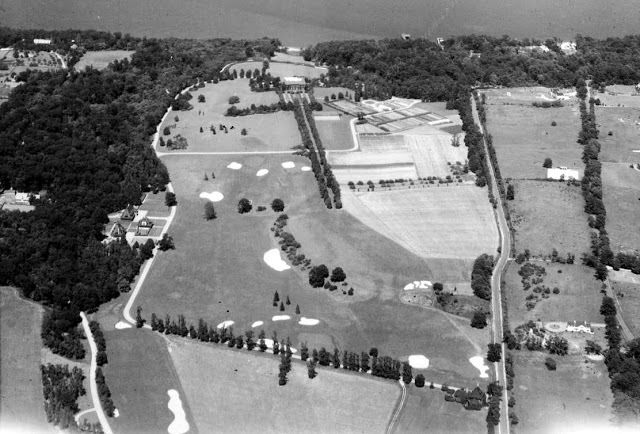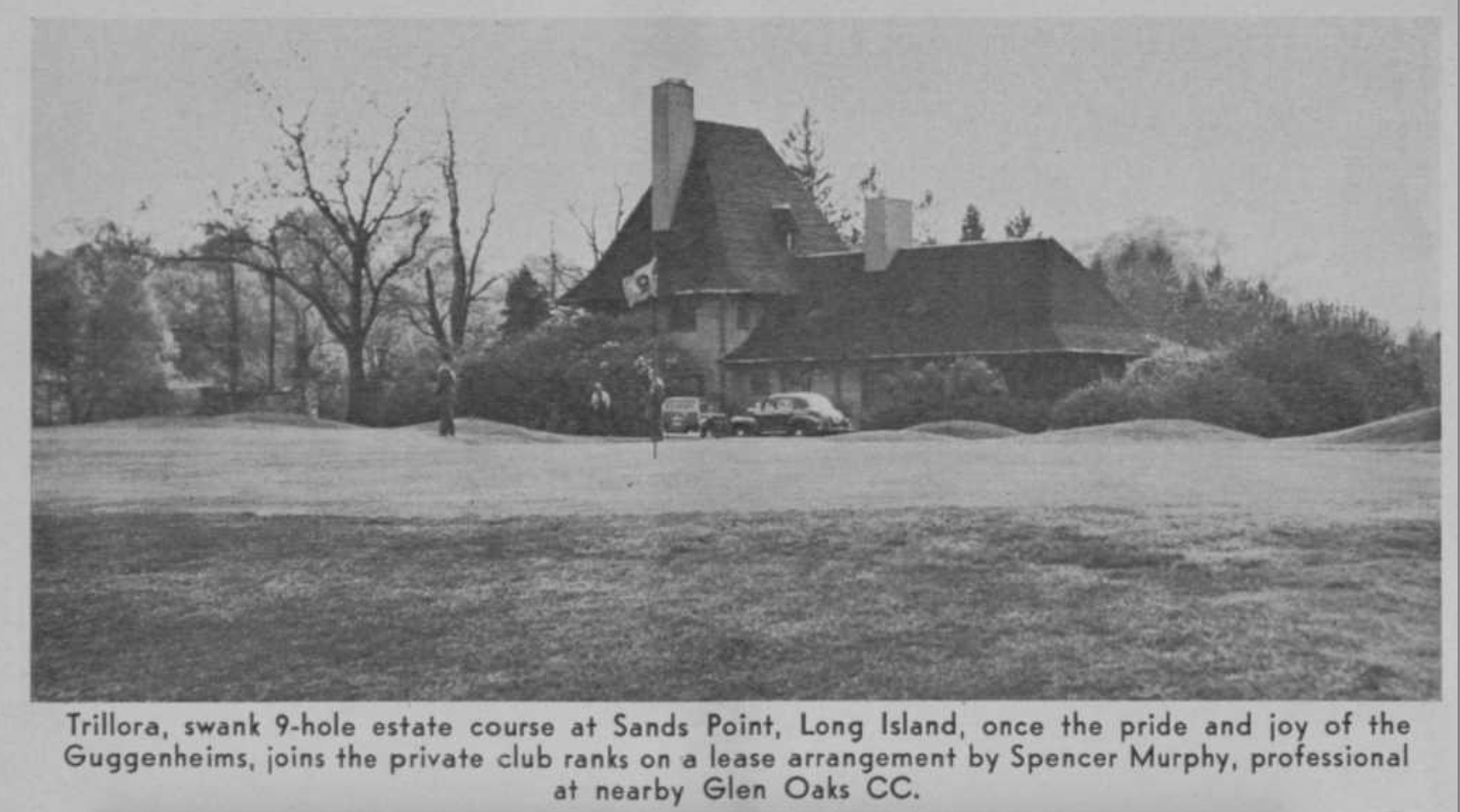Stumbled across this thread looking for information on Isaac Guggenheim's Private Course on Long Island. The course is noted on a map of Metro Area Courses in the July 1917 edition of Golf Illustrated, but like many of the estate courses from back then there is little to no coverage of its design and construction in the various periodicals and guides.
Guggenheim built "Villa Carola" around 1916-17, a project that took several years to complete. At the same time work was started on a 9 hole course. The story is that Guggenheim was denied entry to the local club and decided to build his own course. Isaac would pass away in 1922, with the estate being taken over by his brother Edward who renamed it "Trillora." From what I can gather the estate and the course were maintained by Edward and later Solomon Guggenheim up until Solomon's death in 1950. At that time, the estate was briefly leased by Glen Oaks CC pro Spencer Murphy, before being sold to IBM. From the sounds of it, this is when RTJ came in to rework the course. As Tom notes above, Renaissance added nine holes a little while back.
By all accounts, the Guggenheims had a passion for the game. They hired a slew of professionals, including Willie MacFarlane, Francis Gallet and one or two of the Mackies. At one point a team of women "ringers" was organized to participate in MGA events, but was disqualified as they had recruited the best women players in the district. The course itself was considered to be a good test, containing two par 3's and 3 par 5's and measuring out to around 3,600 yards.
The only report I can find on the original architect of the course, other than the one above, is that Isaac hired the best golf course designer in the country (taken from John H. Davis' book The Guggenheims - An American Epic). The Guggenheims didn't do things in half measure, and certainly had the means to draw the best talent. Unless I missed something, I don't think Alfred Geiffert was ever considered the leading golf architect of his time. Maybe one of the leading landscape architects, but he was not a golf course designer.
So who did design the course? There's a relatively short list of suspects to be considered, with MacDonald, Raynor, Travis, Emmet and Willie Park being some of the bigger names that worked on Long Island. MacDonald seems unlikely, but the other four seem plausible.
I've copied below an aerial of the course from the 1930's. Perhaps it contains some clues.

Here's a shot of the 9th Green from the June 1951 edition of Golfdom.
